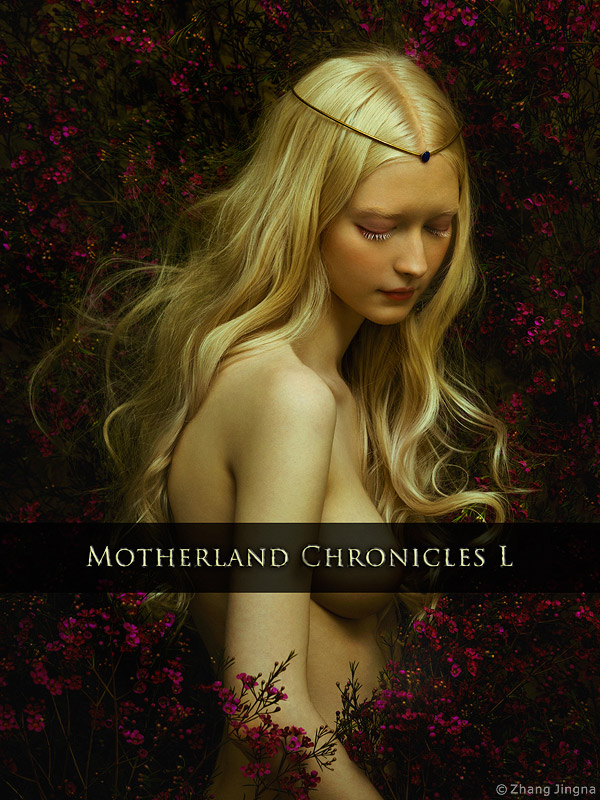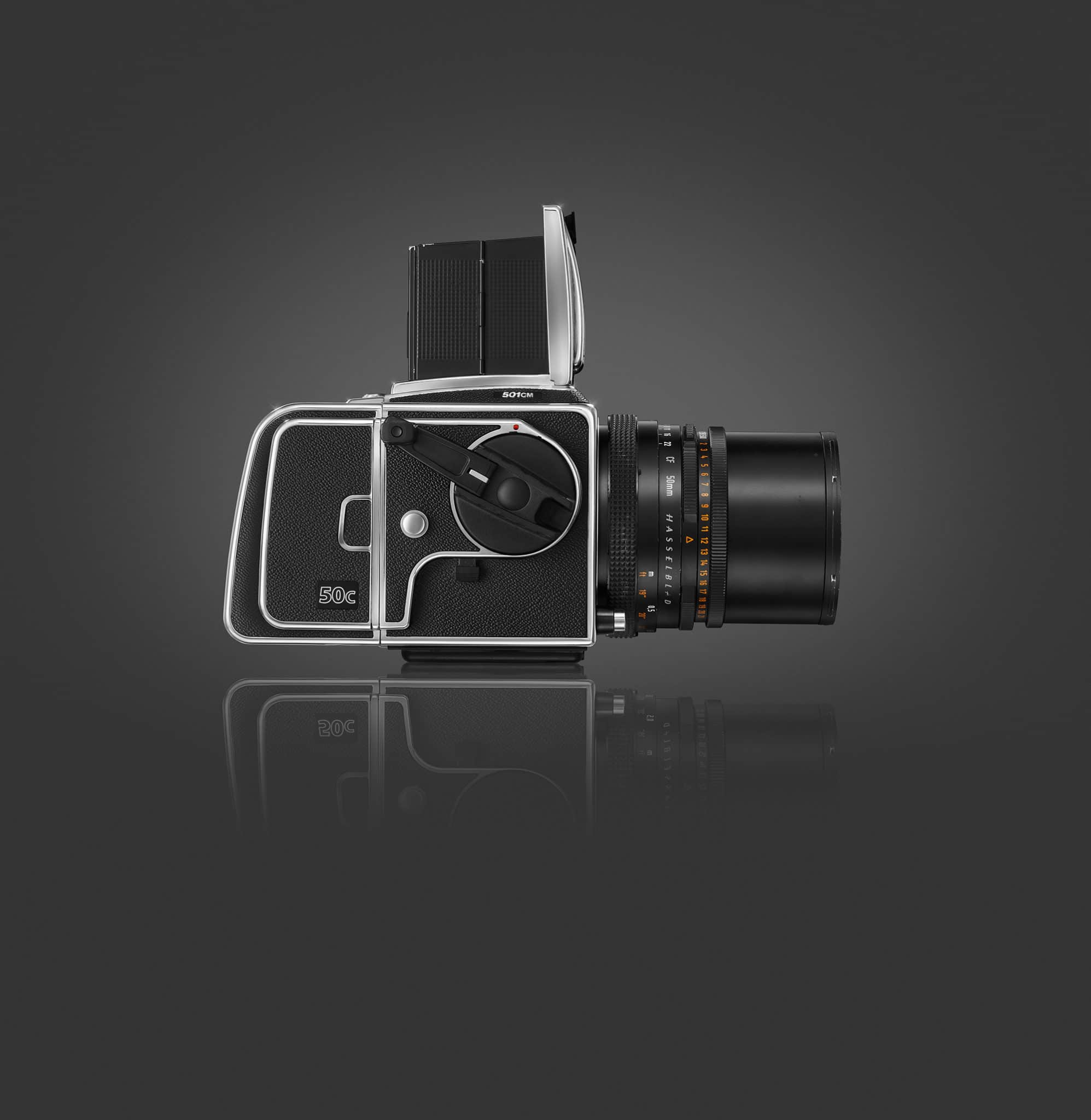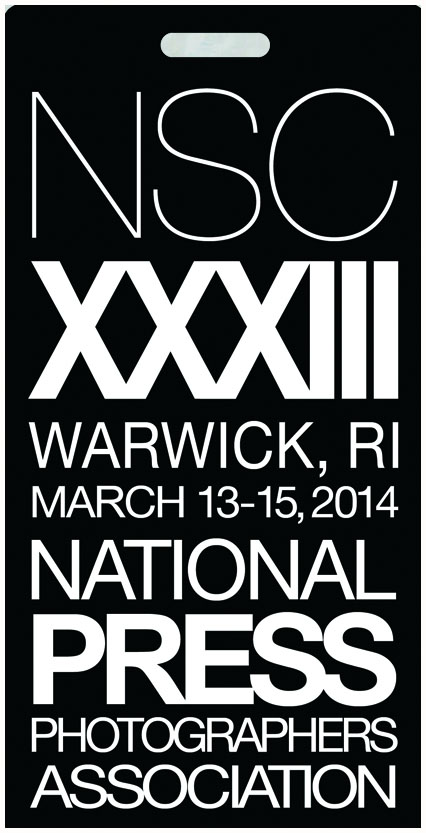Tips & Tricks

Profoto Blog Series: 14 Steps to Improve Your Photography
Zhang Jingna Photography Blog-TipsHere is my 3rd article in the Profoto blog series. Enjoy~
If you have been shooting for a while, whether as a professional photographer or a hobbyist, how do you improve? This is one of the questions I am often asked when a photographer writes to me. With the last two articles, I covered commercial and personal photoshoot productions. For this one I want to turn things inward a little, and talk about how to improve ourselves and better our photography.
So, without further ado, here are my 14 steps to improve your photography!
1. Never Be Satisfied
To start off, I want to focus a little on humility. If you want to get better, you must know that there is room for you to improve and open yourself to criticisms.
If you are already satisfied with yourself, then you lack the hunger that will push you to get better.
Self-assess your weaknesses and keep a list of things you want to improve. Work on them all the time.
2. Build a Feedback Group
Build a trusted circle of friends with good eyes and tastes. Get their opinions and discuss your work on a regular basis.
You can pose specific questions such as, “How can I improve this composition?” or “Which one do you prefer between crop A and crop B, why?” Or you can ask broader questions about your body of work such as, “What do you think is missing from my work?” or “What do you think will make my pictures better?”
Jot down the feedback and distill them into key points. There will be hits and misses of course, because people are different from one another. But these fresh perspectives will help you see things anew, and cover any points you may have missed out on from your personal assessments.
3. Set Goals
With the list from your feedback sessions, prioritize the points you want to work on and follow the steps below.
You can choose something as broad as simply trying new things, or as specific as achieving a particular style or lighting.
The choice is often situational, based on the phase you’re going through with your photography and what you want from it.
Specific things can be great for technical improvements, but broader ideas are great for explorations and evolving your style. Either way, be focused once you’ve made the choice, and don’t be afraid to fail.
4. Build a Reference Library
With a defined goal to work towards, start building a reference library pertaining to your topic of choice. Organize it however you like and save anything of interest, not just pictures. These could be ideas you’ve had, links, illustrations, and even reading lists, jot those down too.
If you already have an existing library, store the new materials separately. In this way, you can reference back to them easily.
5. Read
Being visual people, many of us aren’t natural readers. But there is a limit to how much a person can learn by consuming images alone.
So read to enrich your knowledge and imagination, to understand the backgrounds of your interests and stories of others.
Take your time finding topics that are interesting to you. Look up everything from art history to theories, to biographies, interviews, and monographs.
Don’t just limit yourself to photography either. Anything remotely related to what you like can be an eye-opener and inspirational.
For example, if you want to shoot fashion, you should read up all about the history of clothing and fashion, the industry, designers past and present
and fashion, the industry, designers past and present ; the fabrics, trends and seasons. You should know industry terms, and about hair and makeup
; the fabrics, trends and seasons. You should know industry terms, and about hair and makeup and style.
and style.
A photographer’s job isn’t just to press a button. You are the artist, the director. You have to know your subjects and have your own perspectives in order to take pictures that can express your point of view.
6. Travel
Beyond reading, there are many things that need real-life immersion for us to experience and understand.
Cultures can change significantly from city to city. From the art in galleries and museums, to the landscapes of nature and cities.
Take a few pictures for reference, but don’t just view the world through your viewfinder. Immerse yourself and let the vibe of what you have seen and felt inspire you, stay with you.
Travel is one of the best ways to be inspired, I highly recommend it!
7. Attend Workshops
Workshops are great places to meet people you like and learn about their perspectives and approaches.
You don’t have to adopt the speaker’s way of working or thinking step by step, but go there to learn how something works for someone else, and how you may similarly adopt it for your own work and life.
It’s also a great way to make friends and ask questions, so prepare some good, thoughtful questions beforehand, it’s one of the greatest benefits of in-person interactions.
However, remember that this is but a way of learning. You will not emerge suddenly all-knowing or instantly better. Even the best classes aren’t for everyone, so always keep an open mind.
8. Get a Notebook
With all these newly-acquired knowledge and inspirations, it’s time to move on to the practical part! But first: get a notebook.
You are going to try a lot of new things from this point on, and having a notebook will be handy for brainstorming ideas, jotting down things you want to attempt, and recording any new light setups you will be experimenting with. You could take notes on your phone or laptop too, but it’s just not quite the same as scribbling notes and lighting diagrams with pen and paper.
9. Try New Themes and Subjects
The subject of an image is one of the most defining things about a photograph. You may only shoot people or portraits, how about trying some landscape or still life?
A change in subject can:
For example, I shoot mainly portrait and fashion, but experimenting with macro and still-life has taught me new ways to light and new lenses to use. Sometimes, a new theme or style emerges in the process, and I will be intrigued and inspired to keep exploring. That too carries over into the rest of my work, and it is where the evolution in my style or lighting takes place.
10. Experiment with Lighting
Subject aside, the other most defining element of a photograph is lighting. It sets the mood of your work and often plays a major part in composition.
Look through your new references and find a few things with lighting you have never done before. It can be a photograph, a painting, an idea, or simply a new subject. Do you usually shoot in natural light? Try something in the studio. Do you always use softbox setups? Try shooting under the mid-day sun or a hotlight.
Remember:
Setup photos are great visual aids to accompany lighting diagrams. They help cover anything you may forget or find hard to include in your drawings, and can act as reminders for the environment and anything that may affect the ambiance light for location shots.
This exercise will allow you to discover new setups and create variations to your style. It will also help refine and add to what you currently do.
You may have previously tried to squeeze in a new setup while on other shoots, but without the constraints of a deliverable you can take your time here, it will give you a chance to get much better clarity on what you are doing.
If your test includes a model and a team, don’t forget to explain the purpose of your shoot to them beforehand. When you know you have their understanding, you can focus on your task more easily without worry.
11. Start a Personal Project
After doing all of the above, you should be super inspired and excited! There should be a bunch of the new things you have learnt and want to experiment with. Pick a theme you love the most and start a personal project from there. It can be a mini-series or a major project, it doesn’t matter so long as you care about the topic. Check out my previous Personal Project Walkthrough to see how I did mine.
12. Be Patient
Before wishing you the best of luck on your journey, there are a few last things I want to say. First of all: be patient. Improvement takes time, it doesn’t happen overnight. Treat learning as a process to be enjoyed and know that it will pay off. Don’t try to rush it, don’t worry if it takes a while.
13. Take Breaks
Sometimes we get so caught up in creating we forget to take breaks, but sitting back and taking a breather is just as important as creating itself, you don’t want to risk burning out.
Read some non-photography books, watch some movies, marathon a TV show. Take your mind off photography. It could be a few days, weeks or months. You will come back refreshed, inspired, and with a better perspective for approaching your work again.
14. “Don’t let anyone tell you what to do.”
While feedback is important, remember that it is simply feedback. Don’t lose sight of who you are or the direction you want to take. Don’t forget the reason for your photography.
Remember, learning is a life-long journey. Stay true to yourself and enjoy the ride. Good luck!
-
Want to learn more? Check out my online course Artistic Portrait Photography.
More: my photography articles, gear list
Profoto Blog Series:
- Commercial Photoshoot Walkthrough, from Request to Post-Production / 中文翻译
- Personal Project Walkthrough, from Idea to Realization / 中文翻译
- 14 Steps to Improve Your Photography / 中文翻译
- 15 Tips on How to Break into Fashion Photography
- Top 10 Photography Lighting Tools
- 14 Tips for Photographers Who Want to Go Pro
///
Zhang Jingna:
Website
Instagram
Twitter
Facebook
Article first posted on the Profoto Blog, 17th Sept 2014.
Some of the product links in this post will bring you to Amazon , where I'll get a small referral fee should you choose make a purchase. This helps with the time spent on articles for this blog, so please consider supporting the website. Thank you!
, where I'll get a small referral fee should you choose make a purchase. This helps with the time spent on articles for this blog, so please consider supporting the website. Thank you! 
If you have been shooting for a while, whether as a professional photographer or a hobbyist, how do you improve? This is one of the questions I am often asked when a photographer writes to me. With the last two articles, I covered commercial and personal photoshoot productions. For this one I want to turn things inward a little, and talk about how to improve ourselves and better our photography.
So, without further ado, here are my 14 steps to improve your photography!
1. Never Be Satisfied
 |
| Motherland Chronicles #4 - The Waiting |
To start off, I want to focus a little on humility. If you want to get better, you must know that there is room for you to improve and open yourself to criticisms.
If you are already satisfied with yourself, then you lack the hunger that will push you to get better.
Self-assess your weaknesses and keep a list of things you want to improve. Work on them all the time.
2. Build a Feedback Group
Build a trusted circle of friends with good eyes and tastes. Get their opinions and discuss your work on a regular basis.
You can pose specific questions such as, “How can I improve this composition?” or “Which one do you prefer between crop A and crop B, why?” Or you can ask broader questions about your body of work such as, “What do you think is missing from my work?” or “What do you think will make my pictures better?”
Jot down the feedback and distill them into key points. There will be hits and misses of course, because people are different from one another. But these fresh perspectives will help you see things anew, and cover any points you may have missed out on from your personal assessments.
3. Set Goals
 |
| Motherland Chronicles #23 - Dive |
With the list from your feedback sessions, prioritize the points you want to work on and follow the steps below.
You can choose something as broad as simply trying new things, or as specific as achieving a particular style or lighting.
The choice is often situational, based on the phase you’re going through with your photography and what you want from it.
Specific things can be great for technical improvements, but broader ideas are great for explorations and evolving your style. Either way, be focused once you’ve made the choice, and don’t be afraid to fail.
4. Build a Reference Library
With a defined goal to work towards, start building a reference library pertaining to your topic of choice. Organize it however you like and save anything of interest, not just pictures. These could be ideas you’ve had, links, illustrations, and even reading lists, jot those down too.
If you already have an existing library, store the new materials separately. In this way, you can reference back to them easily.
5. Read
 |
| Hermann Hesse, one of my favorite authors. |
Being visual people, many of us aren’t natural readers. But there is a limit to how much a person can learn by consuming images alone.
So read to enrich your knowledge and imagination, to understand the backgrounds of your interests and stories of others.
Take your time finding topics that are interesting to you. Look up everything from art history to theories, to biographies, interviews, and monographs.
Don’t just limit yourself to photography either. Anything remotely related to what you like can be an eye-opener and inspirational.
For example, if you want to shoot fashion, you should read up all about the history of clothing
A photographer’s job isn’t just to press a button. You are the artist, the director. You have to know your subjects and have your own perspectives in order to take pictures that can express your point of view.
6. Travel
 |
| From top left: Paris, Venice, Isle of Skye, Kyoto |
Beyond reading, there are many things that need real-life immersion for us to experience and understand.
Cultures can change significantly from city to city. From the art in galleries and museums, to the landscapes of nature and cities.
Take a few pictures for reference, but don’t just view the world through your viewfinder. Immerse yourself and let the vibe of what you have seen and felt inspire you, stay with you.
Travel is one of the best ways to be inspired, I highly recommend it!
7. Attend Workshops
 |
| Jon Foster Workshop |
Workshops are great places to meet people you like and learn about their perspectives and approaches.
You don’t have to adopt the speaker’s way of working or thinking step by step, but go there to learn how something works for someone else, and how you may similarly adopt it for your own work and life.
It’s also a great way to make friends and ask questions, so prepare some good, thoughtful questions beforehand, it’s one of the greatest benefits of in-person interactions.
However, remember that this is but a way of learning. You will not emerge suddenly all-knowing or instantly better. Even the best classes aren’t for everyone, so always keep an open mind.
8. Get a Notebook
 |
| Ogami Stone Paper Notebook |
With all these newly-acquired knowledge and inspirations, it’s time to move on to the practical part! But first: get a notebook.
You are going to try a lot of new things from this point on, and having a notebook will be handy for brainstorming ideas, jotting down things you want to attempt, and recording any new light setups you will be experimenting with. You could take notes on your phone or laptop too, but it’s just not quite the same as scribbling notes and lighting diagrams with pen and paper.
9. Try New Themes and Subjects
The subject of an image is one of the most defining things about a photograph. You may only shoot people or portraits, how about trying some landscape or still life?
A change in subject can:
- Make you to shoot and see differently
- Affect the way you set up and compose your shots
- Inspire you to try new equipment
- Help you gain valuable takeaways that can be applied to your main body of work
For example, I shoot mainly portrait and fashion, but experimenting with macro and still-life has taught me new ways to light and new lenses to use. Sometimes, a new theme or style emerges in the process, and I will be intrigued and inspired to keep exploring. That too carries over into the rest of my work, and it is where the evolution in my style or lighting takes place.
 |
| Motherland Chronicles #41 - From the Ashes |
10. Experiment with Lighting
 |
| Try new and different variations of lighting setups. |
Subject aside, the other most defining element of a photograph is lighting. It sets the mood of your work and often plays a major part in composition.
Look through your new references and find a few things with lighting you have never done before. It can be a photograph, a painting, an idea, or simply a new subject. Do you usually shoot in natural light? Try something in the studio. Do you always use softbox setups? Try shooting under the mid-day sun or a hotlight.
Remember:
- Take notes for each setup and variation as you go along
- Draw lighting diagrams
- Take photos of setups
- If on location, write down the hours and light quality
Setup photos are great visual aids to accompany lighting diagrams. They help cover anything you may forget or find hard to include in your drawings, and can act as reminders for the environment and anything that may affect the ambiance light for location shots.
This exercise will allow you to discover new setups and create variations to your style. It will also help refine and add to what you currently do.
 |
| Motherland Chronicles #31 - Book of Roses |
You may have previously tried to squeeze in a new setup while on other shoots, but without the constraints of a deliverable you can take your time here, it will give you a chance to get much better clarity on what you are doing.
If your test includes a model and a team, don’t forget to explain the purpose of your shoot to them beforehand. When you know you have their understanding, you can focus on your task more easily without worry.
11. Start a Personal Project
.jpg) |
| Motherland Chronicles #50 – Eurydice |
After doing all of the above, you should be super inspired and excited! There should be a bunch of the new things you have learnt and want to experiment with. Pick a theme you love the most and start a personal project from there. It can be a mini-series or a major project, it doesn’t matter so long as you care about the topic. Check out my previous Personal Project Walkthrough to see how I did mine.
12. Be Patient
 |
| Motherland Chronicles #46 - The Seer |
Before wishing you the best of luck on your journey, there are a few last things I want to say. First of all: be patient. Improvement takes time, it doesn’t happen overnight. Treat learning as a process to be enjoyed and know that it will pay off. Don’t try to rush it, don’t worry if it takes a while.
13. Take Breaks
 |
| Motherland Chronicles #47 – Womb, #49 – Umbral |
Sometimes we get so caught up in creating we forget to take breaks, but sitting back and taking a breather is just as important as creating itself, you don’t want to risk burning out.
Read some non-photography books, watch some movies, marathon a TV show. Take your mind off photography. It could be a few days, weeks or months. You will come back refreshed, inspired, and with a better perspective for approaching your work again.
14. “Don’t let anyone tell you what to do.”
 |
| Motherland Chronicles #51 - Erin |
While feedback is important, remember that it is simply feedback. Don’t lose sight of who you are or the direction you want to take. Don’t forget the reason for your photography.
Remember, learning is a life-long journey. Stay true to yourself and enjoy the ride. Good luck!
-
Want to learn more? Check out my online course Artistic Portrait Photography.
More: my photography articles, gear list
Profoto Blog Series:
- Commercial Photoshoot Walkthrough, from Request to Post-Production / 中文翻译
- Personal Project Walkthrough, from Idea to Realization / 中文翻译
- 14 Steps to Improve Your Photography / 中文翻译
- 15 Tips on How to Break into Fashion Photography
- Top 10 Photography Lighting Tools
- 14 Tips for Photographers Who Want to Go Pro
///
Zhang Jingna:
Website
Article first posted on the Profoto Blog, 17th Sept 2014.
Some of the product links in this post will bring you to Amazon









.jpg)


















